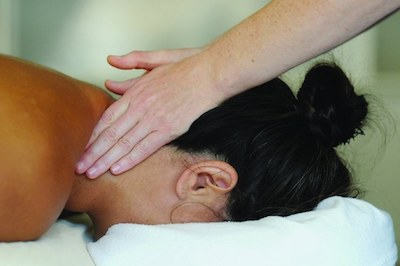HOW VISION CAN BE CONNECTED TO CHRONIC NECK AND SHOULDER TENSION
“The connection between certain visual conditions, especially lazy eye, and postural adaptations is a VERY good reason that chiropractors, bodyworkers, massage therapists, and others who work on physical structure should be collaborating with good optometrists. If something is broken in the visual system that is causing a secondary physical adaptation, it will likely be impossible to resolve the physical adaptation without first addressing the visual problem.”-Brad Coffey, professor of optometry
As a long-time bodyworker and vision teacher, I am always interested in ways we can help our clients: by making them aware of the connection between how they use their eyes, chronic neck and shoulder tension, and what we can do to help them with bodywork.
I was reminded of this recently when I encountered a young man while waiting at a government office. Peter (not his real name), his mother and I had a very interesting and revealing conversation. They were sitting in front of me and I immediately noticed his hairstyle. He looked quite stylish; with very long hair on the left side of his scalp completely covering one half of his face. The right side was completely shaved, and there was a glittery earring in his right ear. Although side-shave haircuts are “in” right now, a quick internet search showed that they never completely cover one eye. This is probably because it blocks the vision as effectively as an eyepatch.
Postural Assessment
From the back, I could also see that his head was rotated to the shaved right side. His left shoulder was considerably higher than the right, most likely because his left sternocleidomastoid muscle was shorter and tighter. He constantly contracted his SCM to turn to the right and look out through his right eye. A shoulder tilt would have effects on his entire spine, and he would also have tremendous eyestrain. His mother said, “Oh, he’s had his hair like that for a long time.” She said that others sometimes call him “the guy with the tilted shoulders.”
Identifying Vision Issue
When I mentioned I would have difficulty getting around with one eye, he seemed to pause for thought. When I asked him what his vision was like, it was obvious he had never thought consciously about his eyesight. I asked how he does at reading (since many people with vision issues strain when they read). He replied he didn’t really like to read (also a common issue with vision problems). As we talked, he seemed to be very struck by what I was saying.
Peter had been operating one-eyed, unconsciously compensating for a vision issue–for a long time–and someone had finally helped name the problem. He could have had a difference in the sharpness of vision in his two eyes which made it uncomfortable for him to use both together. Or, he may have had a difference in the muscles that position the eyes, so he was avoiding seeing double by covering one of them.
Getting Treatment
The first step in his journey would need to be a thorough vision exam by a trained eye doctor, preferably one who could teach him eye exercises. Any bodywork to help his neck muscles and shoulders issue would be very helpful, however without seeing an optometrist the bodywork would be a temporary solution. After receiving treatment for his vision issues, he could truly gain benefit from bodywork. Beginning with techniques to deal with the tension around his eyes and face, then dealing with his sternocleidomastoid muscles, tilted shoulders, and imbalanced upper spine.
One last note- Peter and his mother were deeply grateful for our discussion. Hopefully dealing with his vision problem and getting bodywork will help this young man feel a world better!
Marybetts Sinclair, LMT, NCBTMB approved instructor
www.marybettssinclair.com





